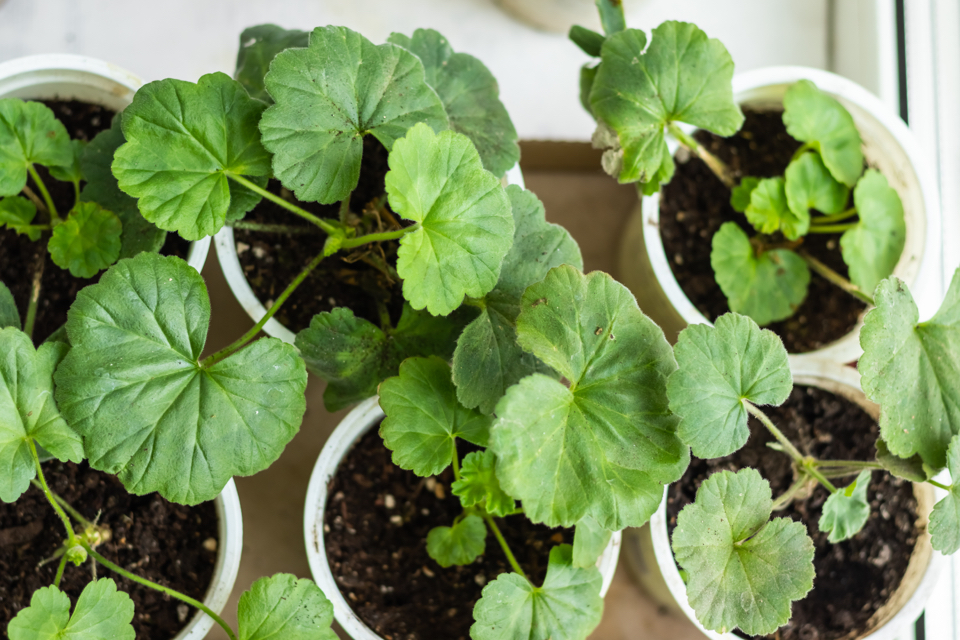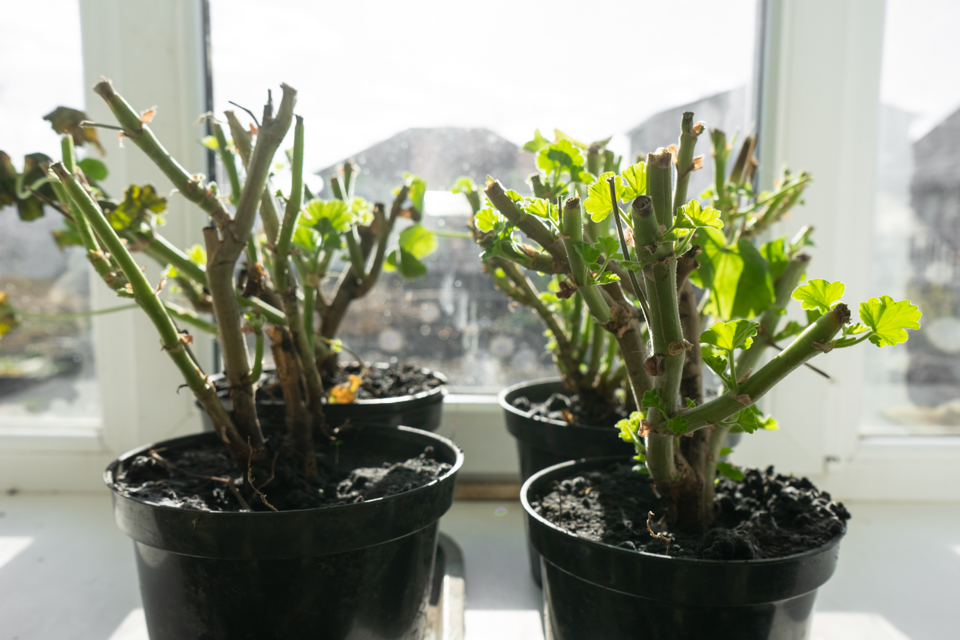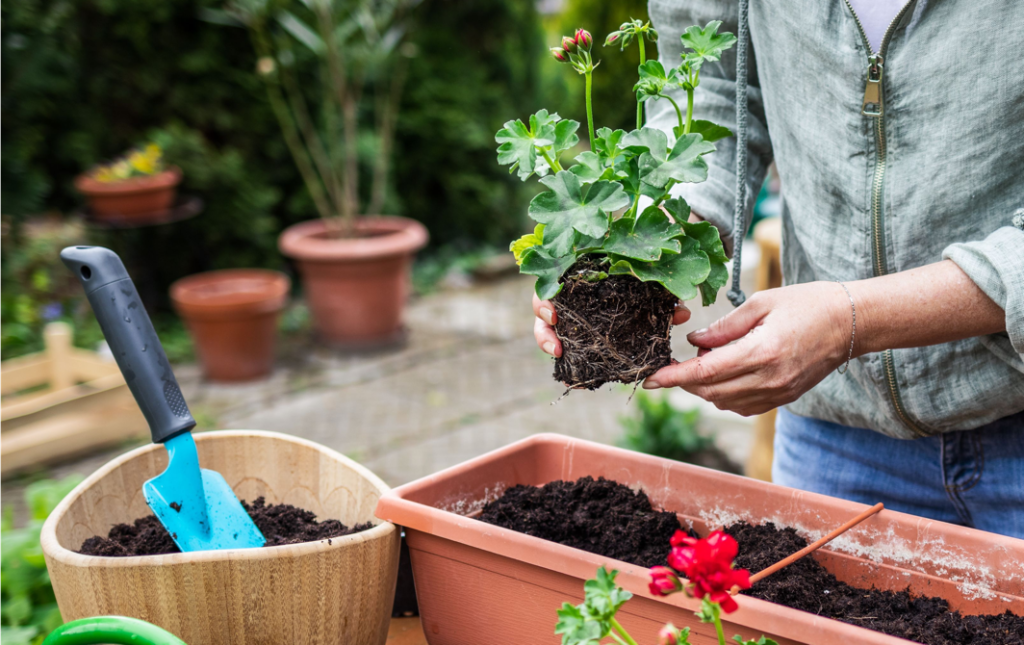Tender Geraniums Are Typically Grown As Annuals, But They Can Be Overwintered

PERENNIALS > GERANIUMS > OVERWINTERING

Elizabeth is a Permaculture Garden Designer, Sustainability Consultant and Professional Writer, working as an advocate for positive change. She graduated from the University of St. Andrews with an MA in English and Philosophy and obtained a Diploma in Applied Permaculture Design from the Permaculture Association.
Reviewed By ROY NICOL

Roy is a Professional Gardener and Horticultural Consultant, specialising in large garden year-round maintenance and garden development. He is an RHS Master of Horticulture and uses his research in the application of no-dig methods in ornamental garden settings. Roy has been a Professional Gardener for more than six years and is a member of the Chartered Institute of Horticulture, Professional Gardener's Guild and Association of Professional Landscapers (Professional Gardener).
IN THIS GUIDE
Geraniums can be excellent value flowering plants to grow in your garden, but it is important to understand that there are lots of different varieties that require a different level of care in the winter months.
How you care for geraniums in winter will depend on whether you are growing tender geraniums or true, hardy geraniums (also known as cranesbill) in your garden.
Read on to understand how to care for both types of geraniums in the winter.
Overwintering Tender Geraniums
Tender geraniums, technically called pelargonium, are perennial plants, but because they are not hardy for the winter months at all, they are often treated as annuals in the UK.
There are three main ways to make sure that you can keep hold of the pelargonium you love for future years, which we have shared below:
1) Taking & Overwintering Cuttings
Taking cuttings is a great choice, especially if you have a number of plants or if you are growing soft-stemmed species.
However, if you want to take this route, preparation begins long before winter actually arrives.
The first step is to take softwood cuttings from your plants, which you should do in late summer.

Once your cuttings have rooted successfully, these should be overwintered indoors, in a bright and frost-free location.
They should be watered moderately and the growing medium should be allowed to dry out between each watering.
In late winter, it is a good idea to feed your young plants every 7-10 days with an organic liquid fertiliser with balanced NPK (nitrogen, phosphorus and potassium content).

Around this time, as spring approaches, it is also a good idea to pinch out the growing tips of your new plants, as this encourages a bushy growth habit.
You then need to pot up individual cuttings into 9cm pots in the middle of spring, harden them off, and then plant them outside – only once all risk of frost has passed where you live.
2) Overwintering Pelargonium Bare Root
Another option to consider if you have large numbers of pelargoniums to overwinter is overwintering them as bare-root plants.
Unfortunately, this is not the most reliable of methods and success rates may be patchy.
Another thing to consider is that this option is only suitable for varieties of pelargonium which have tough and woody stems, and not for more tender-stemmed types.

The idea of this method is to overwinter the plants out of the soil, in a state of dormancy.
You should lift the plants you want to save from their positions in your garden before the first seasonal frosts.
Next, you should dust off any excess soil from the roots and lay them out in a cool but frost-free location so that the stems and foliage dry out.
Then, either wrap them in a newspaper or hang them upside down in a suitable frost-free location.

In early spring, you should then take a look at the plants and keep those which show signs of growth.
Taking these plants, you should first rehydrate them by soaking the roots in water for a few hours.
You can then pot up the rehydrated plants which have survived the winter and cut back their stems to a height of around 10cm.
These should be placed in a warm and bright location, hardened off, and planted out in your garden a little after the expected last frost date in your area.
3) Overwintering In Containers
The third and final option for overwintering pelargoniums is to pot them up and grow them as container plants indoors or under cover.
Of course, container plants will take up some space, so this is usually only an option where there are only a few tender geraniums to overwinter.
With this method, you have the option to either keep the plants in pots in active growth or cut them back to 10cm so they are more dormant.
Space may often dictate which one is the right option for you.

Container geraniums can be kept in pots over winter as long as they are in a light and frost-free location, with good airflow and ventilation.
Those which are kept in active growth will usually need to be watered around once a week, while those in dormancy need only be watered very sparingly until growth resumes in spring.
Container plants should then be repotted in mid-spring, hardened off, then planted out after all risk of frost has passed.
Hardy Geraniums
Hardy geraniums are far lower maintenance plants.
The most commonly grown hardy geraniums are H5-H7 hardy, so should make it through the winter months unscathed without any special care or protection, after flowering right up until the first frosts.
“As with most garden plants, a mulch of compost in the autumn provides extra protection and also feeds the soil, encouraging stronger growth in the spring,” shares Master Horticulturist Roy Nicol.
